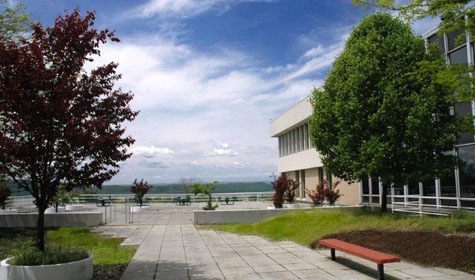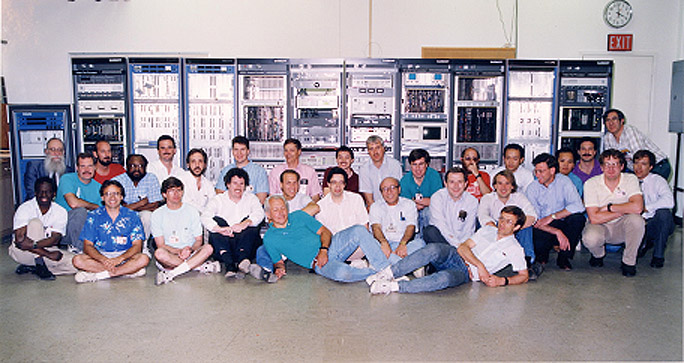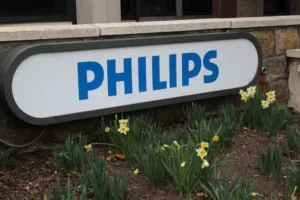Philips Research will close its Briarcliff labs and move the operation to a technology hub in Massachusetts, the company quietly announced last October. According to a letter to staff from Philips Research head Hans-Aloys Wischmann, the move to Cambridge, Mass. will be completed by Sept. 1, 2015. The lab is part of a worldwide network of research facilities operated by Dutch giant Royal Philips.
Philips spokesperson Lea Armstrong confirmed that employees will be offered relocation. “This is not a restructuring, and we hope to move with as many people as possible”, she wrote. “The relocation will also leverage the proximity to Philips’ business headquarters and offers co-location opportunities”, she told us.

In recent years, the Briarcliff facility has focused on healthcare systems and lighting, and has also included the seat of Philips Intellectual Property & Standards. The labs, which held over 300 staff in the heyday of digital television research, currently hosts 125 employees. Philips plans to sell the campus, according to Armstrong. Sale of the property, located in affluent Briarcliff Manor, NY and overlooking the Hudson River, should bring in a sizable sum. William Mooney, director of the Westchester County Office of Economic Development, said the Philips departure is not a setback for the county, where economic development officials have long promoted technology and research. Philips’ original U.S. laboratory opened in Irvington, NY around 1944, and moved to Briarcliff Manor in 1965, after acquiring more than 100 acres of the estate property of American banker James Speyer.
For nearly a decade, the labs were the heart of advanced digital video development work for Philips products in North America, marketed under the Magnavox name. Briarcliff R&D was responsible for receiving three Emmy Awards, for contributions to the Grand Alliance (ATSC) Digital TV standards, UHP (Ultra High Performance) lamp technology for large-screen TVs, , and ghost canceling in TV reception. Among other innovations, Briarcliff research also made possible the industry’s first readily-available, large-scale, single-panel liquid crystal-on-silicon (LCoS) display (one of whose developers is longtime Display Daily analyst Matt Brennesholtz).
The move is part of a shift by Philips away from consumer electronics and towards other, more profitable, businesses, selling their CE product divisions and brand-name licenses to various entities, including TPV, Funai and Gibson. (Funai/P&F USA is responsible for the sourcing, distribution, marketing and sales of television products in North America; the current deal expires at the end of 2015, and Philips has begun discussions on renewing the deal.) With most video development long gone from Briarcliff, the transfer of personnel to Cambridge serves to focus company research on its healthcare and lighting businesses.
The move punctuates another change, too. Philips Research, along with Bell Labs, CBS Labs, and the David Sarnoff Research Center – collectively, among the world’s foremost brain trust in advanced video technology R&D, and all within 50 miles of New York City – have either closed facilities or transitioned away from video research. This is not to say that video technology, especially in new displays and compression systems, does not continue to progress; it’s just distributed across entities far and wide. But the Hudson Valley/Princeton corridor of video technology is no more.

Part of the Philips/Sarnoff Advanced Television Research team, circa 1992
One final note – this will be my last regular piece for Display Daily, as I embark on a number of new undertakings, including ATSC 3.0, interactive content systems, unmanned aerial systems, and an entrepreneurial venture. It’s been a pleasure working alongside so many gifted writers and analysts here at Meko, and at Insight Media before that – a collaboration that started 10 years ago this month! I won’t disappear from the scene entirely, however, so watch for my contributions again from time to time. All the best! – Aldo Cugnini


